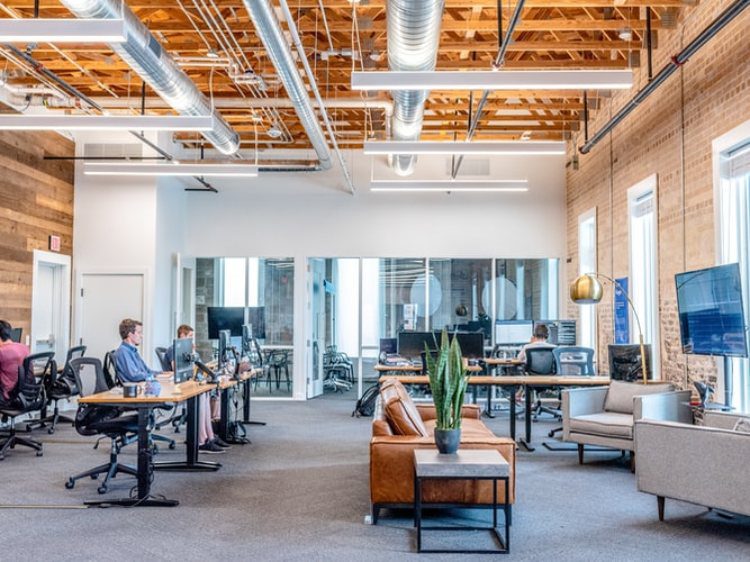How Employers Can Reduce the Social Anxiety of Returning to Work
Coronavirus has made massive changes to the global workforce.
The COVID-19 outbreak forced millions of employees to leave their office desks and work from home instead. It was incredibly challenging in the beginning, but at least, the new setup has given them peace of mind.
Now that vaccination efforts have started to curb the number of cases, many offices are set to open their doors again.
However, according to a recent survey, many employees prefer working from home even though the pandemic is over.
Despite the declining rate of COVID-19, there’s still apprehension about going back to enclosed office spaces for eight hours a day.
What Companies Can Do To Cast Employees’ Fears Away
Do employees want to return to the office?
The answer is yes.
However, they want to be sure that they’re safe.
Health and safety should be the number one priority of companies, especially during a pandemic.
By staying afloat with public health guidelines and creating comprehensive COVID-19 prevention and control measures, employers can easily encourage their staff to come back to their desks and do business as usual.
These are the things that companies can do to ensure workforce safety and to increase employee productivity during these difficult days:
Stay Updated With Current Prevention Measures
Every business needs to keep informed of the current health measures directed by the government and local authorities.
These guidelines are provided by the Health and Safety Executive (HSE) in the UK and the Occupational Safety and Health Administration in the US.
These measures cover risk assessment, social distancing requirements, cleaning and handwashing, ventilation, and air conditioning, and working with vulnerable employees.
Social distancing is one of the most effective measures to control the spread of the virus. Employees are advised to maintain a two-meter distance from other employees.
There are also industry-specific guidelines that companies should be aware of. For example, in some places, restaurants, and bars can only provide drive-through, delivery, take-out, or curbside pickup services. Meanwhile, in other regions, dine-in services are offered, but with limited capacities and strict compliance to social distancing.
These guidelines are updated from time to time. Employers should take the initiative to update themselves with the right information.
Create Internal Policies to Enhance Health Measures
While there are specific guidelines that offices need to implement, each company is different. Managers and leads should work hand in hand with their employees to create a comprehensive action plan that will ensure everyone’s safety.
For example, to easily observe social distancing, employees may be asked to work from home and report to the office on shifting schedules. One strategy that many businesses employ is allowing half of their employees to work from home while the other half works at the office.
Providing flexible schedules is a great way to encourage employees to go back to the office and help them adjust to the new normal.
Employers should also plan a workforce scheduling system to accommodate different shifts. This way, they can avoid crowds during lunch breaks or during time-in and time-out.
The conduct of meetings may be changed as well to accommodate the needs of the company without compromising everyone’s safety.
Furthermore, managers should identify where and how workers might be exposed to COVID-19 and develop a plan to control hazards. These might include meeting rooms, pantries, locker rooms, check-in areas, break rooms, and routes of entry and exit.
Promote Administrative and Personal Prevention Measures
Practicing personal hygiene in the office is important to reduce the likelihood of contracting the disease.
Employees should be encouraged, at all times, to wash and sanitize their hands often, avoid physical contact with other employees, and maintain cleanliness in their workstations.
If needed, employers can post reminders about these hygiene practices in highly visible areas. Disinfecting sprays, clean wipes, and antibacterial hand sanitizers should be easily accessible, especially in entryways and exits, restrooms, and in the conference/meeting rooms.
Employers should provide staff with a written hygiene policy and inform them of the intentions and expectations of disinfecting office space.
This helps communicate the need to take workplace hygiene seriously.
The management should also set clear policies on cleaning and disinfection. All employees have to be included in the communication plans. Everyone from the management to the staff, utility employees, janitorial staff, and maintenance staff.
Provide Mental Health Support
The COVID-19 pandemic has taken a huge toll on people’s health – physically and mentally.
It has drastically changed the lives of people. For some, working from home brought feelings of isolation and burnout.
Meanwhile, those who have been working remotely for a while might have issues adjusting to office life. Interacting with their peers and superiors face-to-face can seem weird and uncomfortable.
Employers should take proper measures to help employees cope with the stress brought by the crisis.
These include:
- Promoting awareness to alleviate the social stigma attached to mental health.
- Encouraging employees to seek mental health support by providing them access to resources. They should know where to go if they need help or information.
- Constantly communicating with employees and listening to their concerns. Managers and team leaders should reach out to their staff regularly.
- Providing mental health considerations, such as work flexibility and taking breaks.
Evaluating Current Measures
Since local guidelines for COVID-19 prevention are constantly changing, employers must stay informed of any changes and coordinate with their internal communications team for dissemination.
It’s also important to evaluate the company’s internal protocols to see which policies are working and which ones have to be revised.
Employees’ feedback plays a critical role here. They may be able to provide helpful insights and suggestions that can intensify the health and safety policies of the organization.
Employers across the globe are getting ready to “go back to normal”. Employees want to return to the office too, but they are concerned about their safety.
Implementing health guidelines from the local authorities along with internal policies for COVID-19 prevention, communicating these protocols to all employees, promoting personal hygiene and cleanliness, and offering mental health support will help create a safe environment for employees returning to work.











